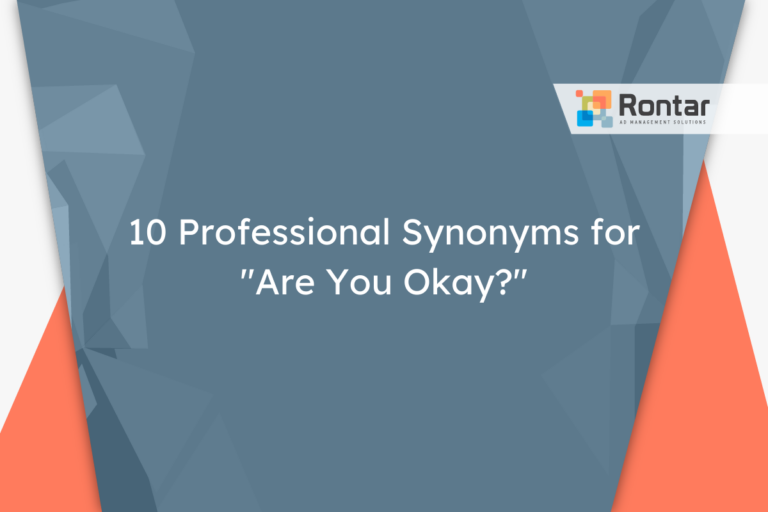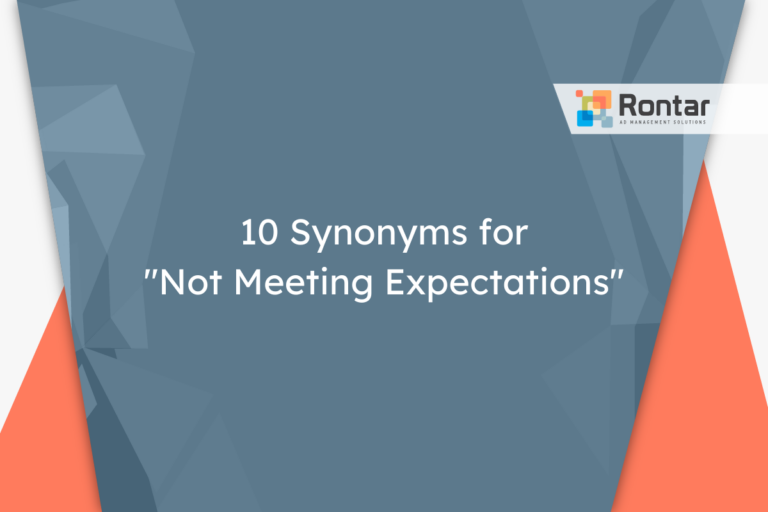10 Other Ways to Say “Moving Forward”

Expressing the idea of moving forward is crucial for progress and clarity. However, using the same phrase over and over can become repetitive and dull.
This article provides 10 alternative phrases to “Moving Forward” that can be used in workplace communications. These alternatives will help keep your messages fresh and engaging while maintaining a professional tone.
Is It Professional to Say “Moving Forward”?
The phrase “moving forward” is considered professional, formal or informal depending on the context, and polite. It’s a versatile phrase that signals a transition or a desire to progress beyond the current state of affairs or discussion points. It’s best used in situations where there’s a need to shift focus toward future plans or actions, especially after summarizing past events or outcomes.
This phrase can be used with various types of recipients or correspondents, including colleagues, managers, clients, and in some cases, with external business partners. It’s suitable for various communication channels such as emails, business meetings, presentations, and formal reports.
Email example:
Dear Samantha,
I appreciate your detailed analysis and suggestions for improvement. Moving forward, let's implement the revised strategy we discussed to enhance our project's performance and outcomes.
Best regards,
Emily
Pros:
- Indicates a clear intention to progress and not dwell on the past.
- Encourages a forward-thinking mindset and action-oriented approach.
- Can soften the transition to new ideas or changes in plans.
Cons:
- Overuse can make it seem meaningless or vague.
- May be too indirect in situations that call for more concrete action steps.
- Could be perceived as cliché or a buzzword, potentially diminishing its impact.
While “moving forward” is a useful phrase, someone might want to explore alternatives to avoid repetition or to express the idea more creatively.
10 Other Ways to Say “Moving Forward”
Here are some popular alternatives to the phrase “Moving Forward” that are perfect for professional emails in the workplace:
- Going forward
- In the future
- From here on out
- Looking ahead
- As we proceed
- Advancing
- Forward-looking
- Proceeding
- Henceforth
- Next steps
1. Going forward
As a professional and polite synonym, “Going forward” closely mirrors “Moving Forward” in both tone and usage. It suggests a future-oriented direction or plan without implying any rush or urgency. It’s best suited for formal or semi-formal business communications where continuity and progression are the focus.
This alternative is especially effective in emails or during meetings when discussing future strategies, plans, or actions. It’s appropriate for communicating with colleagues, clients, and upper management. The tone remains professional and suggests a collective move towards future goals.
Example:
Dear Team,
Thank you for your efforts on our recent project. Going forward, we will implement new strategies to avoid similar issues.
Best,
Mark
2. In the future
“In the future” is a straightforward and formal alternative that clearly indicates a time ahead. This makes it a suitable professional synonym for “Moving Forward”, particularly when outlining plans or expectations that are not immediate but are intended to be addressed later.
It’s suitable for emails and documents that need to convey future intentions or guidelines to a team or within a project. “In the future” is ideal when speaking to professional contacts or within corporate communications where clarity about timelines is needed.
Example:
Dear Colleagues,
In our efforts to improve, in the future, regular training sessions will be introduced for all new hires.
Regards,
Sophia
3. From here on out
The phrase “From here on out” offers a more informal yet still professional tone, ideally used in contexts where there is a desire to signify a change of direction or a new phase. It’s slightly more casual than “Moving Forward”, making it a great choice for internal communications with familiar colleagues or teams.
When used correctly, it can foster a sense of unity and a fresh start. This alternative is best used in emails or meetings that discuss changes in procedures, strategies, or behaviors within the workplace.
Example:
Team,
Your feedback has been invaluable. From here on out, let's ensure we have weekly check-ins to stay aligned.
Best wishes,
Ella
4. Looking ahead
“Looking ahead” emphasizes forward-thinking and planning with a professional and polite tone. It’s used to direct attention toward future opportunities or planning, making it an excellent synonym for “Moving Forward”.
This phrase is perfect for communications that aim to inspire or motivate, such as emails to your team or presentations that outline future visions and strategies. It’s particularly effective in leadership communications to set a tone of optimism and direction.
Example:
Dear Team,
As we conclude this quarter, looking ahead, our focus will be on expanding our market outreach.
Warm regards,
Liam
5. As we proceed
“As we proceed” signals a continuous movement forward while also being professional and polite. It’s slightly more formal and is best used in contexts where ongoing actions or processes are being discussed. This alternative is ideal for details related to project management or when outlining steps in a meeting.
It works well in communications with colleagues or stakeholders, providing a sense of ongoing effort and progression. This phrase optimally fits into detailed emails or during project updates.
Example:
Dear Project Team,
Thank you for today's productive session. As we proceed, please focus on the action items assigned.
Cheers,
Ryan
6. Advancing
“Advancing” carries a professional and action-oriented tone, making it a succinct synonym of “Moving Forward”. It suggests progression and forward movement in a proactive sense. This alternative is best suited for contexts that highlight progress, growth, or achievements.
When communicating about project developments, milestones, or team achievements, “Advancing” sets an appropriately formal yet dynamic tone. It’s useful in emails, reports, or during presentations to stakeholders or management.
Example:
Team,
With our recent successes, advancing, we'll target more ambitious goals to sustain our growth.
Kind regards,
Oliver
7. Forward-looking
“Forward-looking” is not just a synonym but also frames the context in a professional and strategic manner. It indicates a focus on future possibilities and is ideal for discussions involving planning, strategy, or vision. This phrase is slightly more formal and less about immediate action and more about attitude or perspective.
It’s particularly effective in reports, strategic communications, and meetings where the objective is to set long-term goals or to inspire a future-oriented mindset. “Forward-looking” is well-received in corporate settings, especially among strategic planners and leadership.
Example:
Dear Stakeholders,
Our forward-looking strategies will ensure we remain competitive and adaptive to market changes.
Sincerely,
Diana
8. Proceeding
“Proceeding” provides a direct and professional way to indicate moving from one point to the next. It has a slightly more formal connotation than “Moving Forward” and emphasizes the act of continuation. This alternative fits in formal documents, detailed project plans, or procedural communications.
When detailing next steps or how to move forward from a particular point in discussions, emails, or formal communications, “Proceeding” effectively communicates progression in a clear, actionable manner.
Example:
All,
To ensure clarity, proceeding with the project will require approval from all department heads.
Regards,
Nathan
9. Henceforth
“Henceforth” is a more formal and somewhat archaic synonym for “Moving Forward”, yet it remains a professional choice in certain contexts. Because of its formality, it’s often used in legal, academic, or high-level corporate communications to signify a perpetual forward motion from this point.
This phrase is most appropriate in formal declarations, policy changes, or significant announcements. Its use is recommended when clarity and permanency are required, making it ideal for contractual agreements or important company updates.
Example:
Faculty and Staff,
Henceforth, all research proposals must be submitted with a detailed methodology section.
Best,
Professor Collins
10. Next steps
“Next steps” is a professional and polite term that focuses on the immediate actions to be taken, serving as a practical and actionable alternative to “Moving Forward”. It’s particularly useful in wrapping up meetings, emails, or discussions with a clear path outlined for upcoming actions.
This phrase is versatile, fitting seamlessly into emails, project plans, or meeting summaries. It’s ideal for communicating with team members, project stakeholders, or management, offering a straightforward approach to detailing future actions.
Example:
Dear Participants,
Thank you for today’s insightful discussion. The next steps will be circulated by Monday.
Regards,
Angela
Final Thoughts
Choosing the right words in a professional setting can greatly impact how your message is received. The alternatives to “Moving Forward” listed in this article offer a diverse set of options for various situations and tones you might need for workplace communications. By mixing up your language, you can communicate more effectively and keep your colleagues and clients engaged.






